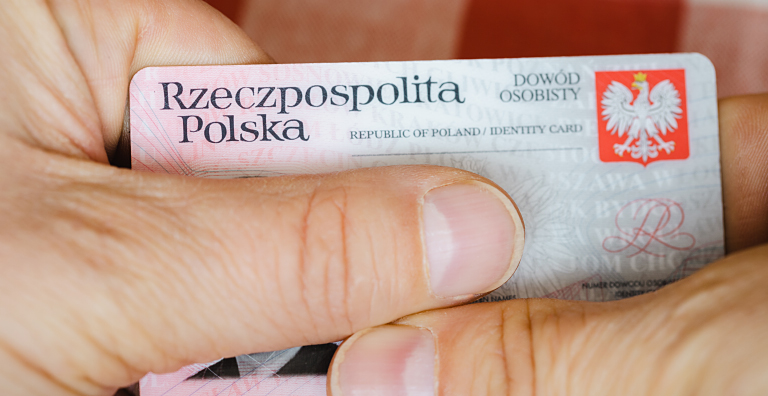How Two Fingerprints Transform Life Across Poland
In 2021, amid a global pandemic, the European Parliament implemented an ambitious endeavor to roll out biometric national ID cards across the European Union (EU) to strengthen security and make it easier for people to travel between countries.
Poland is leading the charge in leveraging best-in-class fingerprint readers to not only get citizens promptly enrolled in the EU program, but to also ensure important government subsidies reach refugees and those in need who rely heavily on benefits distributions. The Chancellery of the Prime Minister discovered that tapping the right technology tool is truly transforming lives within the country’s borders.
Biometrics Bring Big Benefits to the People
To meet the mandatory EU Regulation, the Polish government incorporated 7,500 units of HID DigitalPersona® 5300 fingerprint readers across 2,000 cities as part of its large-scale civil ID enrollment process. In 2021 alone, more than 120,000 citizens were enrolled and received new ID cards.
Using these fingerprint readers proved to be so effective in just a short amount of time, the country commissioned another 4,000 additional readers over the next few months to scale up efforts. It is estimated that more than 2 million citizens were set up with national IDs by the end of 2022.
In addition to meeting strict identity requirements and the added convenience of not having to carry a passport while moving within the EU countries, this biometrics-based program also plays a vital role in the daily lives of people residing in Poland.
“We quickly realized using HID’s DigitalPersona 5300 readers to capture fingerprints is a fast, simple, reliable and extremely efficient way to confirm identities for mass-processing initiatives,” said Janusz Cieszyński, Minister of Digital Affairs. “Integrating HID’s fingerprint readers into our national ID infrastructure is a game-changer as people benefit from its speed and convenience for ID verification.”
With a surge of refugees over the years, fingerprint readers have been especially useful in driving efficiencies around registering visitors and processing applications for the country’s coveted PESEL — the abbreviation for Poland’s Universal Electronic System for Registration of the Population. This 11-digit figure functions as a work, residence, education, medical and social services permit, and is mandatory for all permanent and temporary residents of Poland.
For others living within the territory, today’s economic circumstances push many citizens into needing various forms of social assistance for a range of conditions including unemployment, disability, poverty, homelessness, addiction, child endangerment services and more. Fingerprint biometrics confirm individual identities to get the right resources to the right people at the right time.
Pressing Forward with Proven Biometric Identity Solutions
Biometric readers like the HID DigitalPersona 5300 enable Polish government officials to capture fingerprints of individuals and confirm identities within seconds. These rugged, cost-efficient devices meet compliance and security requirements including GDPR and International Civil Aviation Organization (ICAO). Designed to satisfy the high-volume requirements of large-scale civil ID enrollment and authentication, the DigitalPersona 5300 offers superior image quality, complies with the FBI Mobile ID FAP 30 image quality standards, and its advanced presentation attack detection (PAD) can catch spoofs and counterfeit fraud attempts.
“EU countries lead the planet in incorporating biometrics across a wide range of scenarios for identity verification,” said Mr. Cieszyński. “Our citizens can press on an easy-to-use sensing device, prove their identity in a matter of seconds, and then move forward with their day.”
Fingerprinting is at the center of everyday interactions throughout Poland — helping to swiftly authenticate individuals as they carry out “business as usual” around town. At the country level, Poland models how innovative technology paired with proficient government programs can support the well-being of citizens and visitors by efficiently and accurately confirming identities across a range of circumstances. On a global scale, programs such as the EU national ID card initiative demonstrate biometric identity standardization is not only possible, but simply a couple of touchpoints away.
Learn more about how HID powers Poland’s biometric National ID card >>
Discover HID’s full portfolio of single fingerprint readers >>
